Hey, foodies in the hive!
How do you like your sourdough bread? I love it simple but also with dried veggies, herbs and seeds. This one is vegan basil pesto. Hope you like it.


And this that looks like a picture of Neolithic bread, haha, is my bread in the oven, once I unmolded it for a second round of baking.
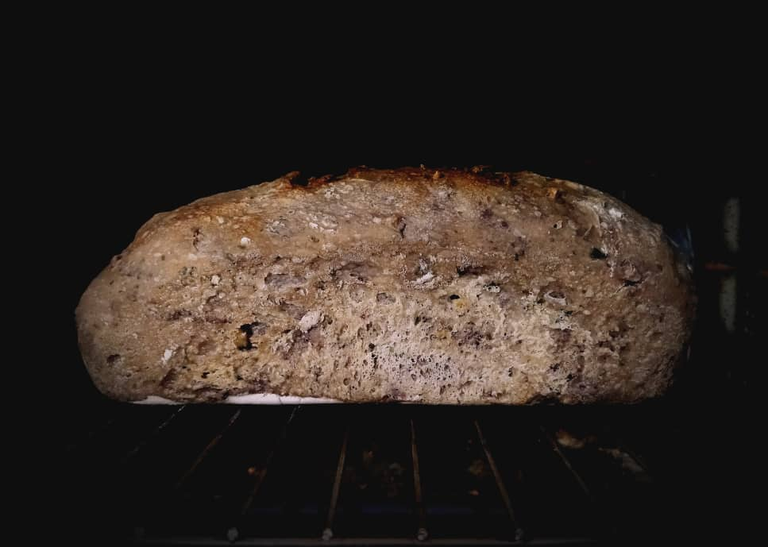
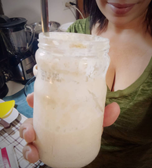
I'm thrilled to post this one recipe. I've finally gone past that point where I was terrible scared of sourdough. Now I'm just scared, haha. Today I made the second attempt to find my own recipe for a sourdough vegan basil pesto bread. I don't have pictures of the previous recipe, but I'm pretty sure I will prepare it many times more, so when the moment comes, I'll take some photos and write the recipe post for my Hive friends here.

INGREDIENTS

For a 800 gr loaf
- 80 gr sourdough starter
- 220 gr water
- 400 gr all purpose flour (16 gr protein)
- 1 teaspoon salt
- 1 tablespoon concentrated basil pesto (I used homemade)
- 1 tablespoon fresh minced garlic
- 75 gr walnuts
- About 50 gr flour to sprinkle on counter and loaf
- Your favorite sandwich bread baking mold. I used a 7x29.5x13 cm mold for this 800 gr loaf.

THE PROCESS
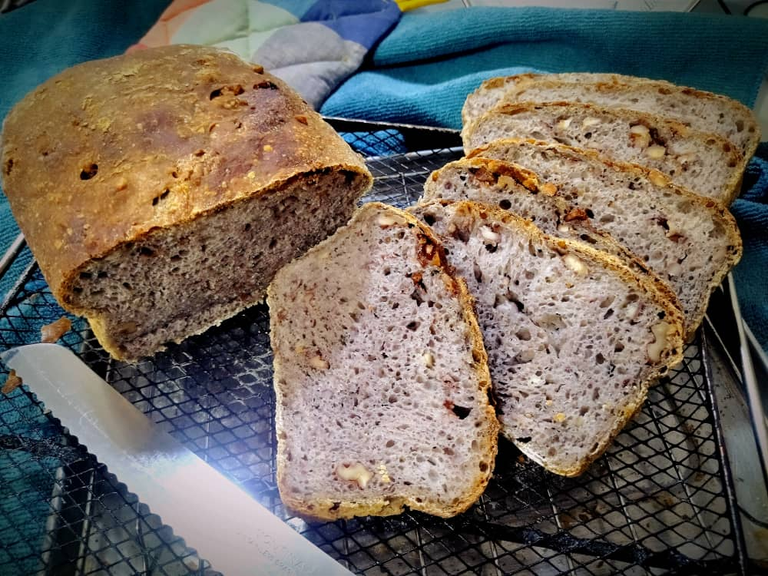
One of the things I found most difficult to understand is that this whole process requires a cool environment to work the dough and then refrigeration for the slow leavening. So for now, I have forgotten my previous bread making habits.
First, I dissolved the sourdough starter in the water.

The water must be cool.

When the starter had dissolved completele, I added the pesto.
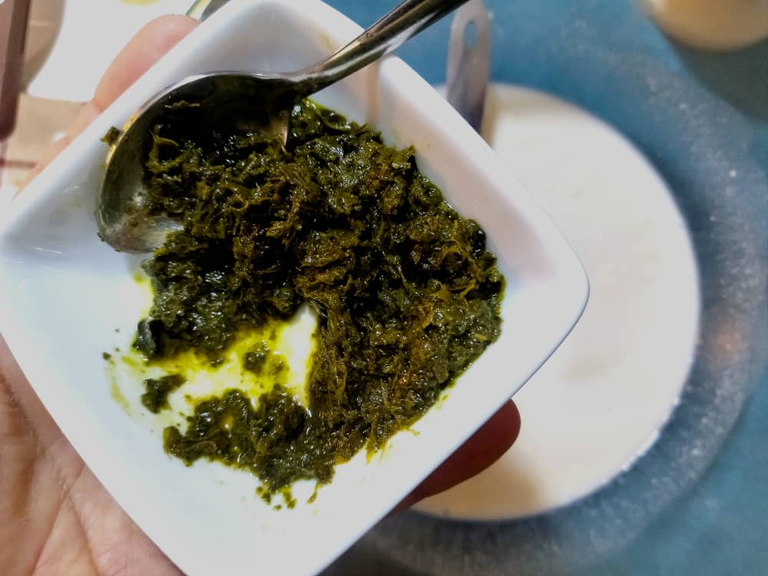
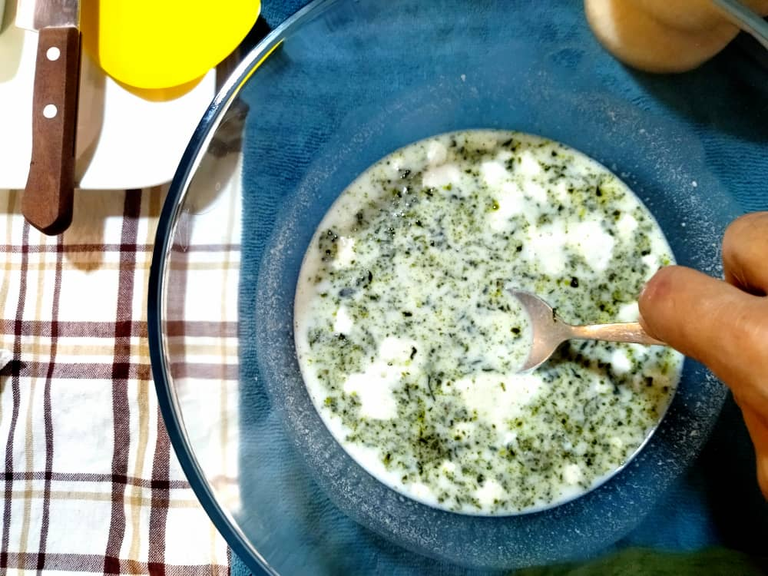
Then I minced the garlic cloves and a handful of walnuts and added them in the mixture as well.
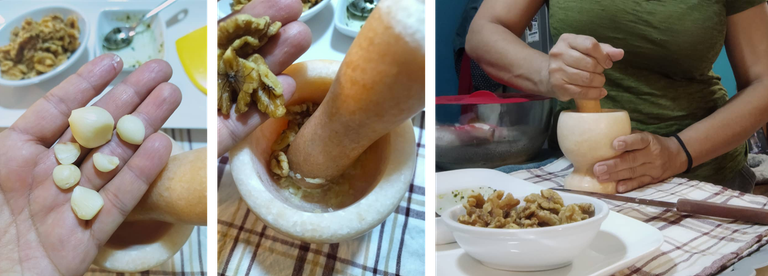
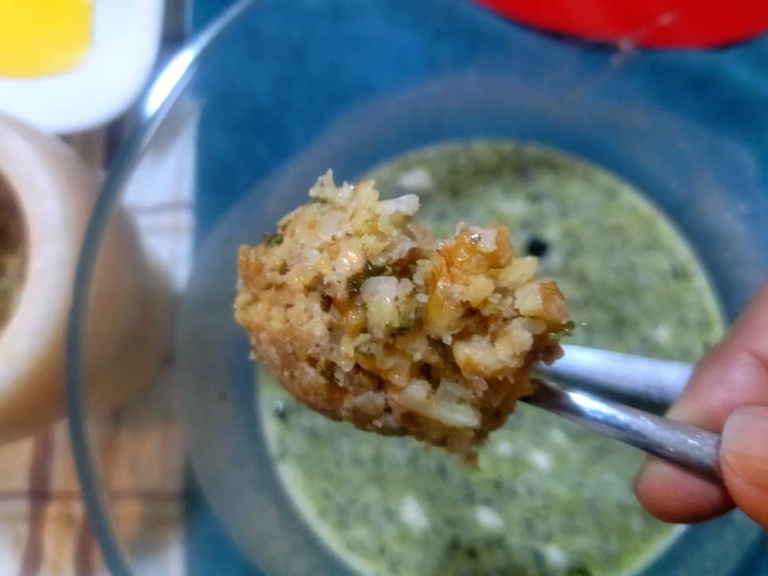
I mixed everything well and now it was time to measure and add the flour.
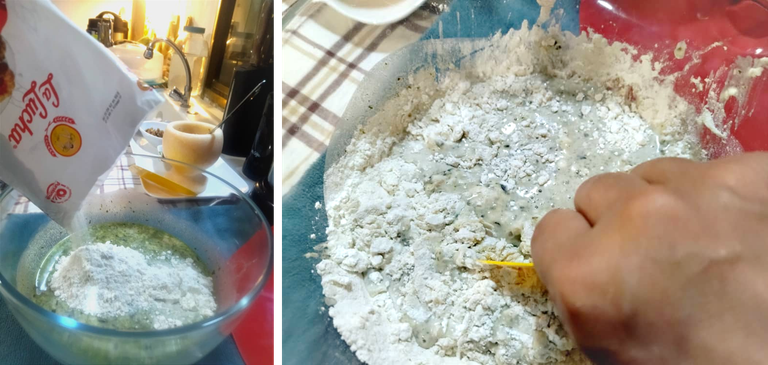
I work the dough just enough to get everything mixed, no dry flour left. I used I dough scraper for this--after I broke my sylicon pastry spoon, which now I understand was not designed for this job.

Once all the mixture had absorbed the liquid, it was time for autolysis. I let it rest for 30 minutes, with a lid on.
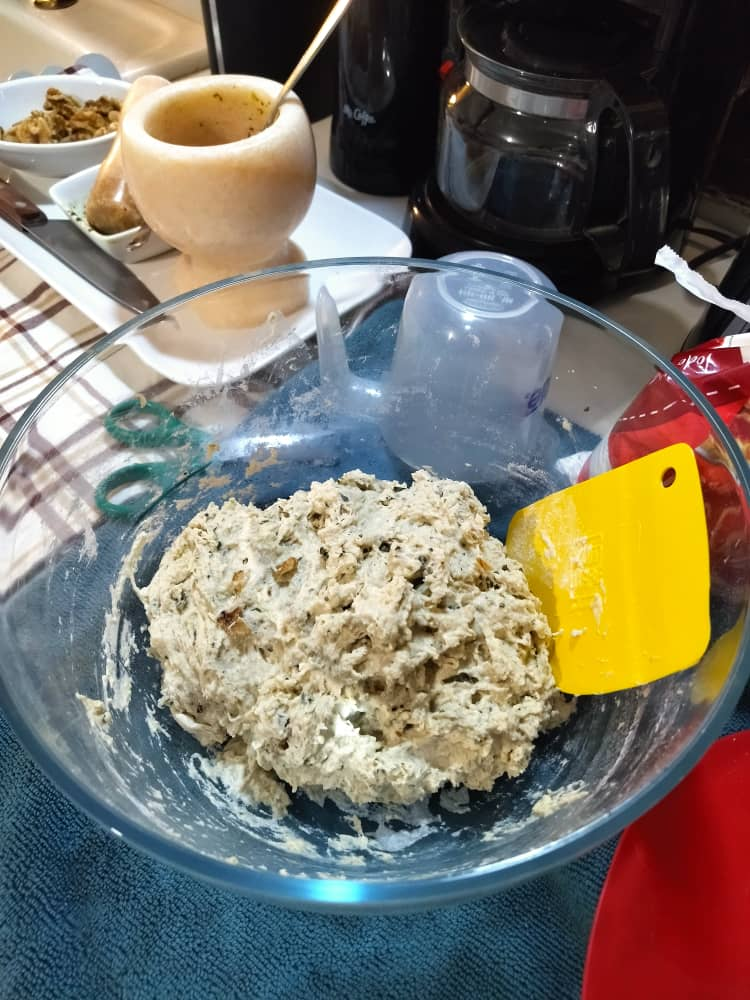
After the 30 minutes had gone by, I added the salt and started kneading.
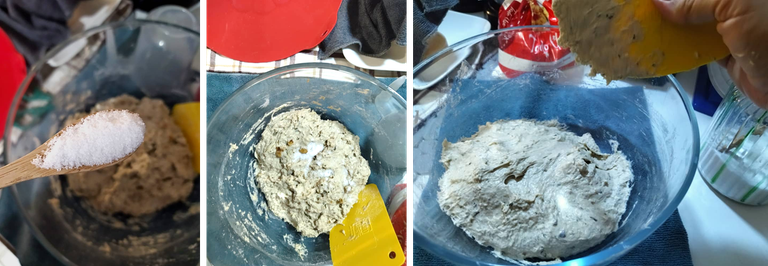
...stretching and folding...

I worked it out to activate the gluten, which is funny when I think about it because this way, with natural leavening, gluten doesn't seem to affect me.
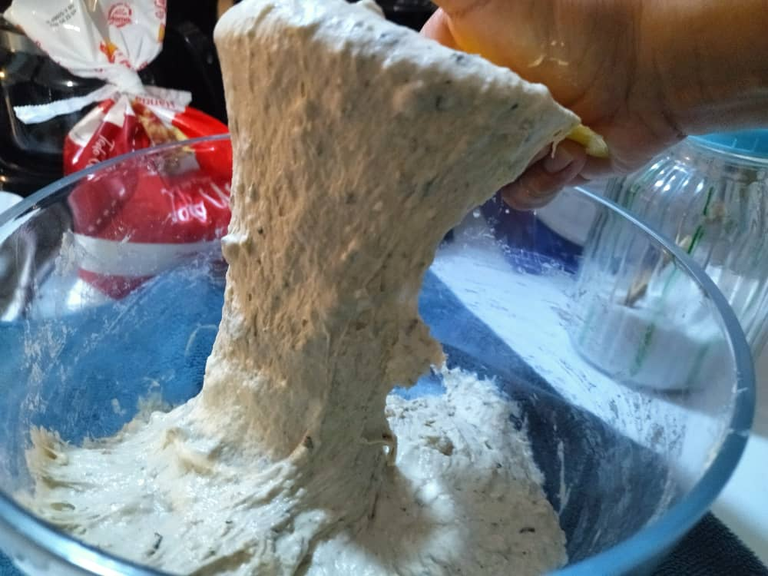
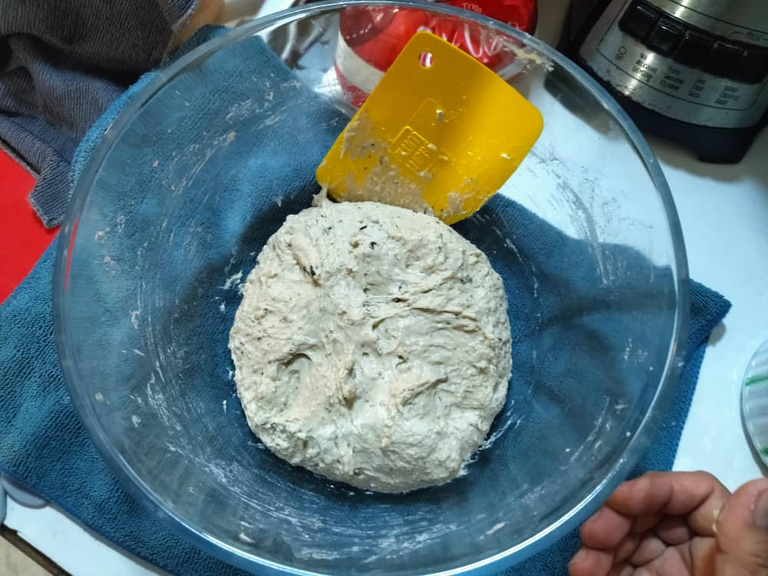
The dough rested for a couple of hours. Then I sprinkled some flour on the counter and poured the dough to assemble the bread (without working it any more, so as not to deflate it).
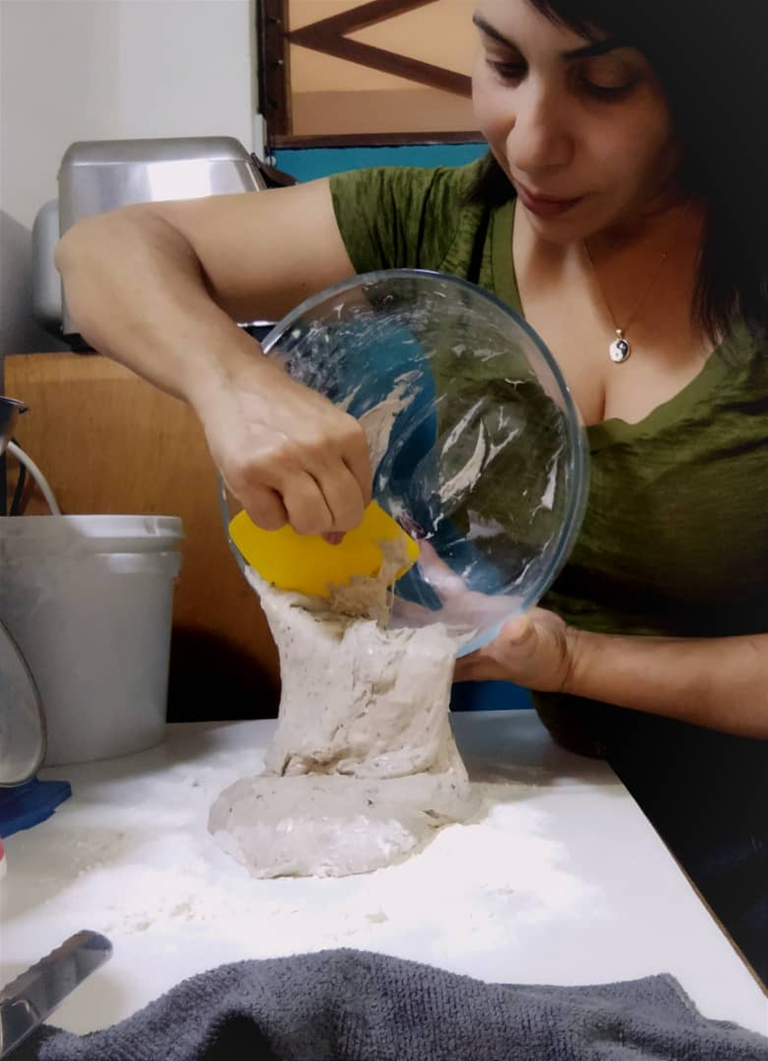
You may not notice it, but this process was a little messy. The dough was much softer than I expected. It must have been because of the oil in the pesto, I guess. But in the end, it went well.
I crushed the walnuts left; they'd go inside the loaf.
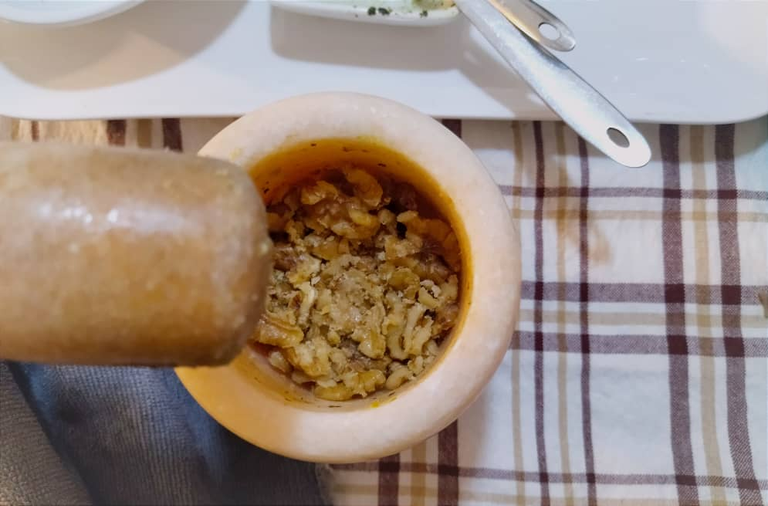
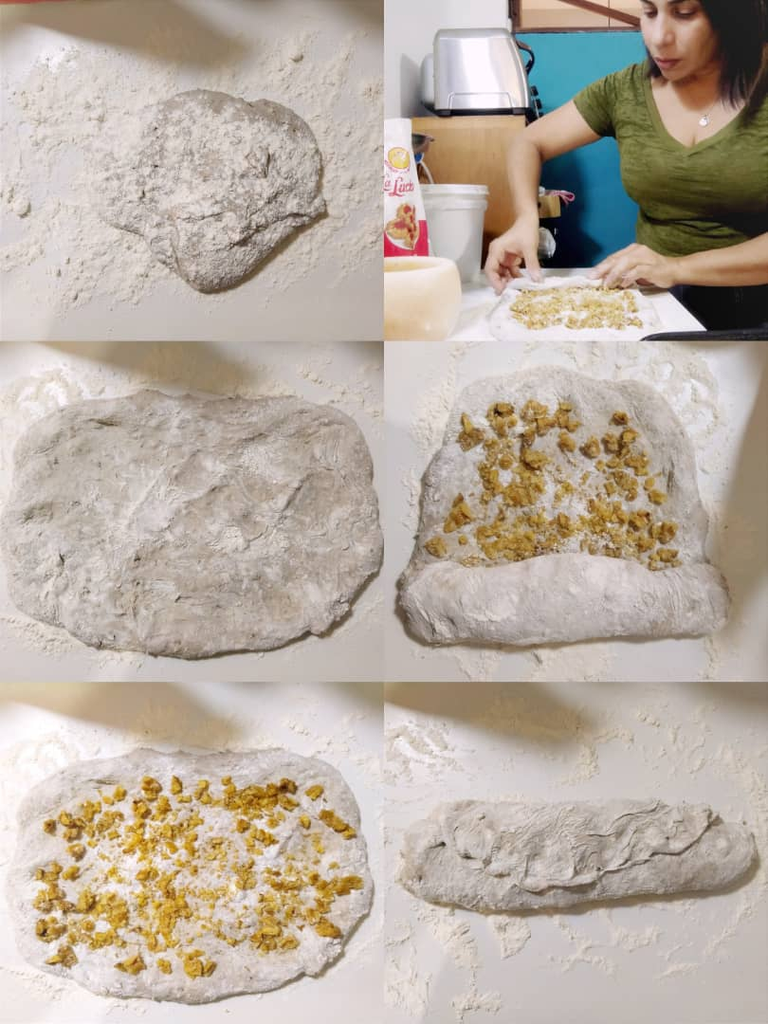
I felt the dough was going through my fingers as struggled to take the picture, haha.
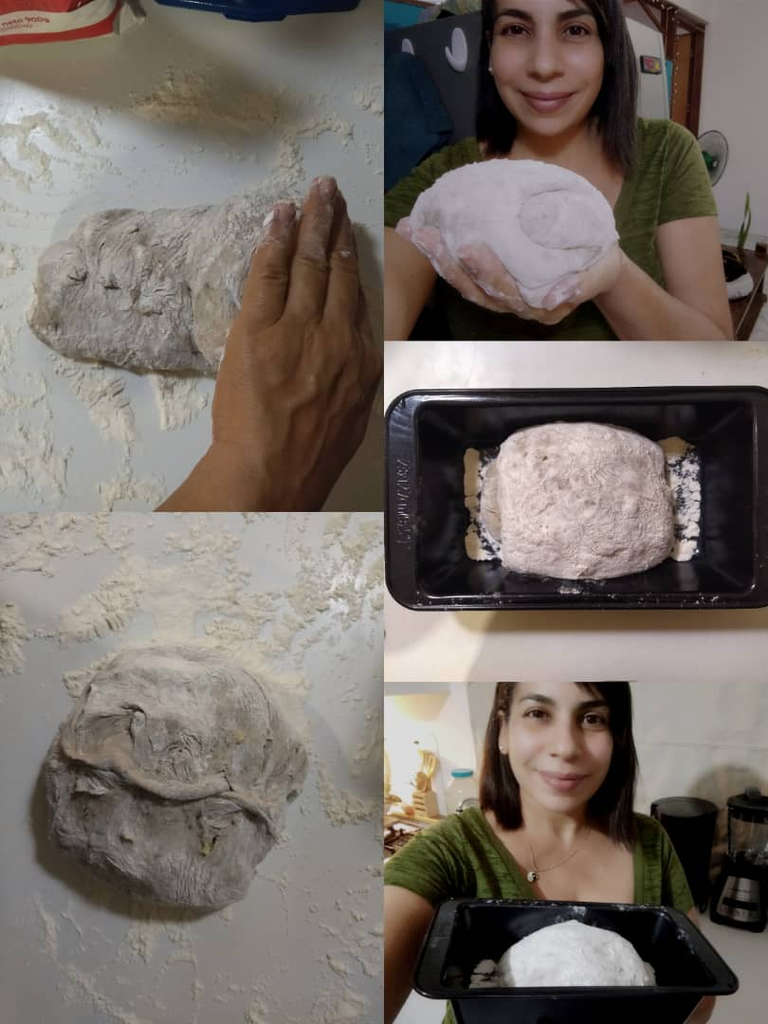
After 8 hours in the fridge and 4 on the counter, it had nearly tripled its volumen as you can see. You will see that little hole, too!
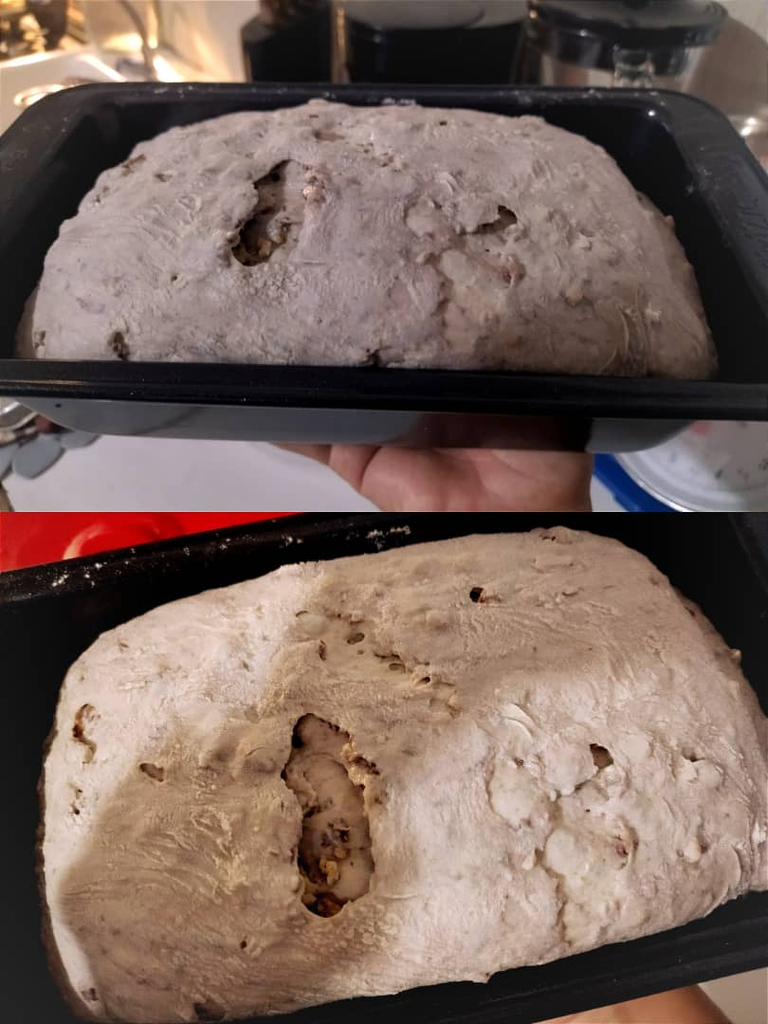
It's important to remove the bread from the mold and bake it a second time, to achieve a crispier crust and firmer slices when slicing. I learned it the hard way.

After the bread was cold and the gelatinization process was complete, I proceeded to slice half of the bread to give to my sister who has grown very fond of my sourdough experiments.
As usual, I hope you found this post useful 😁❤️

What would you spread on these slices?
I like to make "tostas" with this kind of bread; they are open sandwiches made with toast. The possibilities are many, and the best thing is that you'll be satisfied with one or two slices. Sourdough bread is filling and goes down my stomach smoothly. Ever since I learned this, I started to try so hard to master the basic technique. Now I feel happy I can make my own bread, one that is healthy and makes me feel so well.
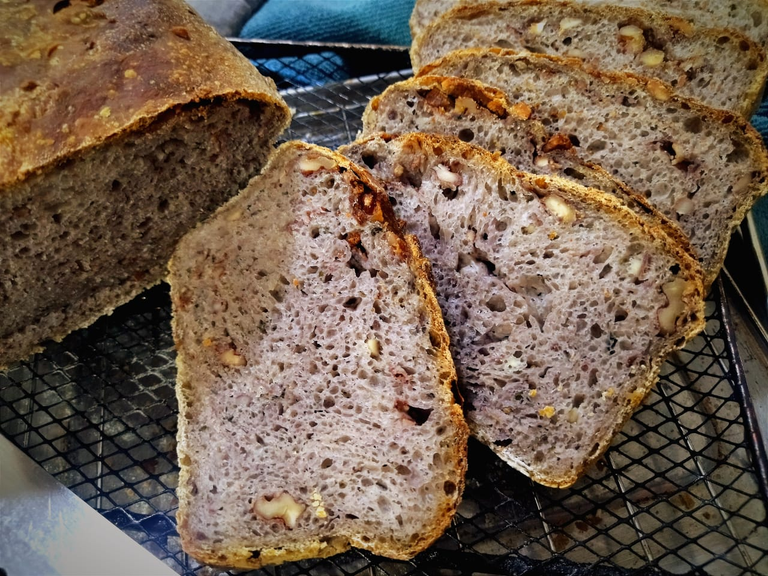

All text and images are my own. I have taken the pictures with my Redmi 9T cell phone. And if any GIFs here, I've used GIPHY for all them.

Thank you so much for your visit :)


